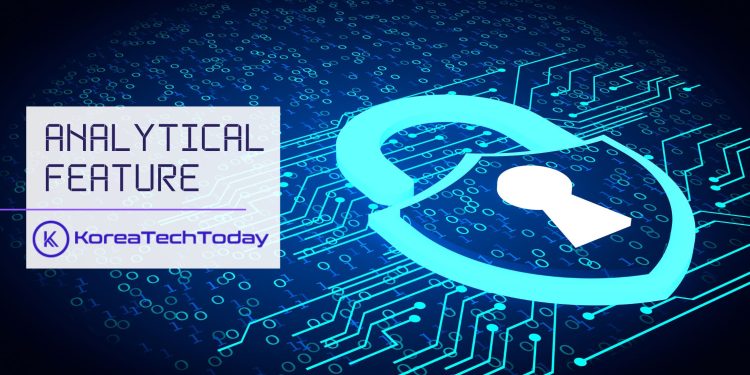From telecoms to credit cards, a wave of leaks exposes systemic vulnerabilities — and demands a fundamental rethink of cybersecurity governance, corporate incentives, and regulatory design.
In 2025, South Korea — often celebrated as a global digital leader — has found itself repeatedly scrambling in response to a succession of serious data breaches. From the catastrophic leak of USIM authentication keys to millions of mobile subscribers to the exposure of credit card data from major issuers, these incidents are more than isolated missteps; they illustrate structural cracks in the nation’s digital security foundation.
For a country where connectivity, e-commerce, mobile finance, and digital services are deeply embedded in daily life, recurrent data leaks carry risks far beyond reputation. They erode public confidence, impose large financial burdens, stir regulatory backlash, and shift strategic balance in the tech ecosystem. This article delves deep: mapping the timeline of incidents, tracing the layers of impact, unpacking the technical and governance failures, scrutinizing corporate security incentives, exploring attacker sophistication, comparing regulatory frameworks abroad, and pointing the way toward reform and resilience.
Timeline of Major Breaches: When Trust Took Hit After Hit
A look at this year’s major data leaks shows a disturbing pattern: the breaches are no longer isolated or accidental — they’re systemic. Telecom networks, payment systems, and even retail databases have all been hit, revealing long-standing weaknesses in security governance. The table below outlines the major breaches that pushed regulators, investors, and consumers to demand accountability.
Date / Period |
Entity / Sector |
Nature & Scale of Breach |
Key Leaked / Affected Data |
Response & Consequence |
|---|---|---|---|---|
April 2025 |
SK Telecom (Telecom) |
Malware & infiltration over multiple years; internal servers accessed |
USIM authentication keys, IMSI, phone numbers, network data, SIM auth data |
PIPC fines ~134.8B KRW; USIM replacement program; stock plunge; forced governance reform |
Mid-2025 |
KT / telecom structural leaks |
Reports of misuse / exposure via illegal/mini base stations |
IMSI / base station identifiers (investigative) |
Interagency response; regulatory spotlight on telecom infra |
August 2025 |
Lotte Card (Finance / Payments) |
Hack of online servers (~17-day infiltration) |
Identification data, credit card numbers, expiration, CVC — ~280,000 especially exposed |
Issuance of new cards; 110B KRW security budget; regulatory investigation |
Recent / ongoing |
Broader institutional leaks |
Luxury brand (Louis Vuitton Korea), ongoing interagency formation |
Personal/contact info |
Broader sector awareness, media pressure, government coalition forming |
Highlight: The SKT Case
SK Telecom’s breach stands at the center of the current crisis. A joint public–private investigation revealed that attackers had embedded malware (variants including BPFDoor) in its systems, compromising critical subscriber infrastructure dating back to 2021. The leak included USIM authentication keys, IMSI, phone numbers, SMS data and network usage — exposing over 23 million users.
SKT’s internal security was found deeply flawed: numerous servers lacked passwords, network segments were overly connected, and crucial systems ran outdated, unpatched OS versions. The intrusion was active for years before detection.
On April 18, SKT initially noticed anomalous external communication, but formal notice to regulators (KISA) only followed two days later — in violation of the 24-hour reporting rule.
The fallout was swift: SKT’s shares plunged (as much as 8.5%) in one day. The government, via the Ministry of Science & ICT and PIPC, imposed fines, demanded governance overhaul, and forced a massive USIM replacement program.
As of the investigation’s public report, no IMEI leaks were confirmed — though the risk of SIM-swap fraud from exposed authentication data remains very high.
Impact Across Levels: From Corporate Balance Sheets to Citizen Trust
A. Corporate & Financial Consequences
- Fines & remediation costs
SKT was hit with a record 134.8 billion won (≈ USD 96–97 million) fine by the PIPC — the largest ever under Korea’s updated data protection regime.
Lotte Card announced a 110 billion won cybersecurity budget over five years in the wake of its leak. - Revenue hits & forecasts
SKT revised its 2025 revenue estimates downward by 800 billion KRW to account for breach-related costs.
KT and other telcos have felt margin pressure in reaction to increased cybersecurity capex and scrutiny. - Market & investor reaction
On the SKT disclosure day, the stock dropped as much as 8.5%, marking one of the sharpest one-day declines in recent years.
Rival operators quickly ramped promotional campaigns, offering incentives to switch.
B. Consumer & Social Impact
- Mass exposure of personal and authentication data
Tens of millions of users had SIM auth keys, IMSI, phone numbers, or card details exposed, data that enables advanced identity fraud, SIM-swap, and account takeover attacks. - Trust erosion & customer churn
SKT saw a wave of subscriber exits once early termination fees were waived. Over one stretch, net outflow reached 75,214 users; daily porting sometimes topped 10,000 users. (Korea Joongang Daily)
Some consumers applied pressure via social media, legal suits, and demands for compensation, amplifying reputational damage. (Reported in media narratives) - Indirect risk: fraud and financial loss
Though no mass misuse was confirmed immediately, theft of authentication data leaves the door open for creative attackers to exploit second-order vulnerabilities (e.g. SMS-based 2FA, account reset flows).
C. Regulatory & Institutional Impact
- Policy hardening & enforcement escalation
The government responded by forming an interagency coalition to coordinate data breach responses and oversight.
PIPC leveraged its recently strengthened authority (under the 2023 Personal Information Protection Act) to issue record fines and impose governance mandates.
- Institutional urgency & infrastructure review
Telecom and finance regulators — already under scrutiny — have begun reassessing baseline security requirements for networks, interconnection, and critical infrastructure.
Committees and task forces have been established to propose regulatory updates that better reflect the sophistication of attacks.
- Public sector & national security concern
The breaches underline that telecommunications systems — historically seen as hardy infrastructure — now represent strategic vulnerability. The state must treat data security as a matter of national risk, not just business compliance.
Why It’s Happening: Technical & Governance Drivers
A. Technical Weaknesses & Expanding Attack Surface
- Legacy systems & weak hygiene
The PIPC investigation found SKT servers accessible without passwords and running unpatched or obsolete operating systems. - Because network and management servers were overly interconnected, attackers could pivot from public interfaces into core infrastructure (e.g. Home Subscriber Server).
- Misuse of telecom infrastructure (mini base stations, rogue BTS)
Reports suggest leak exposure via illegal / covert small base stations, misuse of IMSI routing, or other telecom-level manipulations are in investigative focus.
- Advanced malware & persistence techniques
The discovery of BPFDoor variants, multiple backdoors, and lateral movement techniques indicate a highly capable adversary. These types of malware are known to evade detection over long dwell times. - Supplier/third-party vulnerabilities
Many data systems interconnect with external vendors and platforms (e.g. server hosting, API services). Weak links in vendor software or identity management often become ingress vectors.
- Delay in detection & notification
SKT took weeks (or even years) before discovery and days before notifying authorities — violating 24-hour reporting requirements and allowing attackers to exfiltrate without immediate pushback.
B. Governance Failures & Structural Incentives
- Board & CEO accountability gaps
The government ordered SKT to place direct CEO oversight of data governance quarterly, signaling that prior governance was insufficient.
Many firms lack cybersecurity representation at board level or tight alignment between business risk and security investment. - Short-termism in capital allocation
Security investment often competes with revenue-generating projects. Firms may underinvest in resilience hoping breaches won’t occur.
In the Lotte Card case, critics noted that despite moderately high IT security staffing ratios, budget allocations remain low relative to risk. - Outsourcing & trust model flaws
Outsourcing core IT or security functions (like network operations, cloud management) removes control and visibility into the system. Weak SLAs and lack of audit rights exacerbate risk.
Firms sometimes treat cybersecurity as “IT overhead” rather than strategic risk, which undercuts proactive governance. - Insurance misalignment & moral hazard
Cyber insurance exists but often covers losses post-factum; it does not always incentivize active hygiene or rapid reporting. Overreliance on indemnification can foster complacency. - Procurement & procurement culture
Security standards are uneven in procurement decisions. Contracts may focus on cost over security guarantees or audit rights, leaving holes in software or hardware supply chains.
4. Attack Sophistication & Case Study Failures
Tactics, Techniques & Procedures (TTPs) in focus
- Long-dwelling malware & stealth persistence
In SKT’s case, attackers reportedly used a range of backdoors (BPFDoor, TinyShell variants) spanning multiple servers over multiple years, indicating advanced, patient campaigns.
- Privilege escalation & lateral pivoting
Once inside the network, attackers leveraged weak segmentation to reach the Home Subscriber Server (HSS) and retrieve subscriber authentication keys.
- Targeting authentication systems
The leak of USIM keys is especially dangerous: it enables SIM cloning, bypassing telecom-level two-factor systems, and creating direct identity fraud vectors.
- Supply-chain & software exploit vectors
Some reports suggest vulnerabilities in VPN or remote access software (e.g. Ivanti) may have provided initial footholds.
- Delayed exfiltration & obfuscation
Attackers likely staged data exfiltration gradually, hiding in normal traffic, compressing or encrypting data, and using multiple relay points — complicating detection. (Common in APT playbooks)
Case-by-case defense failures
- In SKT, multiple servers lacked basic access controls (e.g. no password required), enabling lateral access.
- Encrypted storage of SIM authentication keys was absent; many keys were in plaintext.
- Detection systems either failed to flag malicious behavior or logs were not maintained/retained, hampering post-facto investigation.
- Lotte Card’s breach reportedly lasted ~17 days before detection; its online payment server was penetrated. The scale suggests moderate sophistication.
These cases underscore that attackers are increasingly targeting critical infrastructure and authentication systems, not just peripheral data stores.
5. Comparative Policy & Best Practices: Korea vs. the World
Korea’s regulatory position
- Korea’s Personal Information Protection Commission (PIPC) has been empowered under the 2023 revision of the PIPA, allowing it to levy administrative fines of up to 3% of revenue.
- However, some fined companies argue that actual penalties (e.g. SKT’s ~0.5–1% of revenue) remain lower compared to potential severity.
- There is a dual regulation environment: privacy law, telecom regulation, financial regulation, etc., often overlapping but not always harmonized.
- Reporting windows (24-hour rule under Information and Communications Network Act) are strict in law. SKT’s violation triggered additional scrutiny.
International comparisons
- European Union (GDPR): Fines can reach up to 4% of global turnover or €20M, whichever is higher. The GDPR mandates breach notification within 72 hours.
- United States: Sector-specific regulations (e.g. HIPAA, GLBA) and state laws require prompt disclosure and can impose class-action liability.
- Japan: The Act on the Protection of Personal Information (APPI) requires prompt reporting and imposes administrative fines; recent moves focus more on systemic oversight.
- In many jurisdictions, regulators also require cybersecurity audits, board accountability, and mandated incident response plans.
Lessons & Recommendations
- Korea should enhance mandatory board-level cybersecurity oversight, akin to some EU member states.
- Regulators could require certified cyber maturity audits rather than just compliance.
- Introduce tiered breach classification (e.g. high-impact breaches trigger mandatory forensic audits).
- Enable faster cross-border cooperation and data sharing with global CERTs.
- Build public-private security coalitions, similar to the US CISA model, for coordinated incident response and threat intelligence exchange.
6. Reform & Market Response: Where Opportunity Lies
Industrial & Market Opportunity
- The surge in breaches is creating demand for managed security service providers (MSSPs), threat intelligence firms, forensic consulting, and cyberinsurance.
- Local firms with domain knowledge (Korean language, regulation, telecom infra) can gain competitive edge versus multinational vendors.
- Demand exists for training & talent development: certifications, university programs, upskilling.
Structural Reform Proposals & Public-Private Models
- National Incident Response Capability (K-CERT upgrade): akin to US CISA’s role — central coordination, threat sharing, mandatory reporting, proactive defense.
- Cyber Resilience Fund / Incentives: Government subsidies or tax credits for enterprises making certified cybersecurity investments.
- Mandatory Security Scorecards & Disclosure: Public companies should be required to publish their security maturity or breach history, akin to ESG reporting.
- Incident Voucher / Rapid Response Corps: Government-backed “rapid response teams” to help small/medium enterprises recover from breach impact.
- Procurement & compliance standards: Mandate minimum security requirements in procurement contracts (e.g. encryption, audit rights, incident response clauses) across public sector and regulated industries.
- Talent pipeline & scholarship programs: Government partnerships with universities and private sector to train cybersecurity experts, with scholarships and mandatory internship in public service.
7. What Enterprises Must Do Today: A Roadmap for Resilience
Here’s a framework (short- to mid-term) that firms and CISOs should adopt proactively:
| Area | Actions / Best Practices |
| Fundamentals & Hygiene | Patch management, remove default credentials, segment critical infrastructure, deploy endpoint detection (EDR/XDR). |
| Zero Trust & Access Controls | Apply “never trust, always verify” model, just-in-time access, multi-factor authentication everywhere. |
| Encryption & Key Protection | Encrypt data at rest/in transit; protect and rotate keys; harden authentication systems. |
| Monitoring & Threat Detection | 24/7 Security Operations Center (SOC), threat-hunting teams, real-time alerting, retention of logs. |
| Red Team & Penetration Testing | Periodic ethical hacking (internal/external), adversarial simulations, blind attack drills. |
| Vendor & Supply Chain Risk | Enforce security requirements, audit rights, contract clauses, security assessments of third parties. |
| Incident Response & Recovery | Maintain playbooks, table-top drills, rehearsals with teams, fast escalation paths. |
| Governance & Accountability | Appoint CISO, board-level reporting, cyber risk as board agenda, link exec compensation to security goals. |
| Insurance & Cyber Risk Finance | Appropriate cyber insurance, clear understanding of coverage, avoid moral hazard. |
| Transparency & Customer Communication | Prepare breach notification templates, define escalation thresholds, publicly commit to transparency. |
These measures should be phased: hygiene first, then structural resilience, then proactive threat intelligence.
Conclusion: From Breach Spree to Structural Fortification
South Korea is at a critical inflection point. The wave of data leaks emerging in 2025 is not a mere series of cyber incidents — it is a signal that urgent systemic transformation is overdue. As the SK Telecom and Lotte Card cases show, when core infrastructure or payment systems are breached, the scale and ripple effects can be national in consequence.
To restore trust and resilience, Korea must move beyond reactive enforcement. What’s needed is a whole-of-society approach: stronger governance, smarter regulation, corporate accountability, talent investment, and market-mobilized cyber capacity.
If handled rightly, this crisis can become a springboard — repositioning Korea not just as a digital powerhouse, but as a model for secure, scalable, resilient digital infrastructure in the 21st century. But complacency is not an option: the next breach may not knock — it might shatter.







